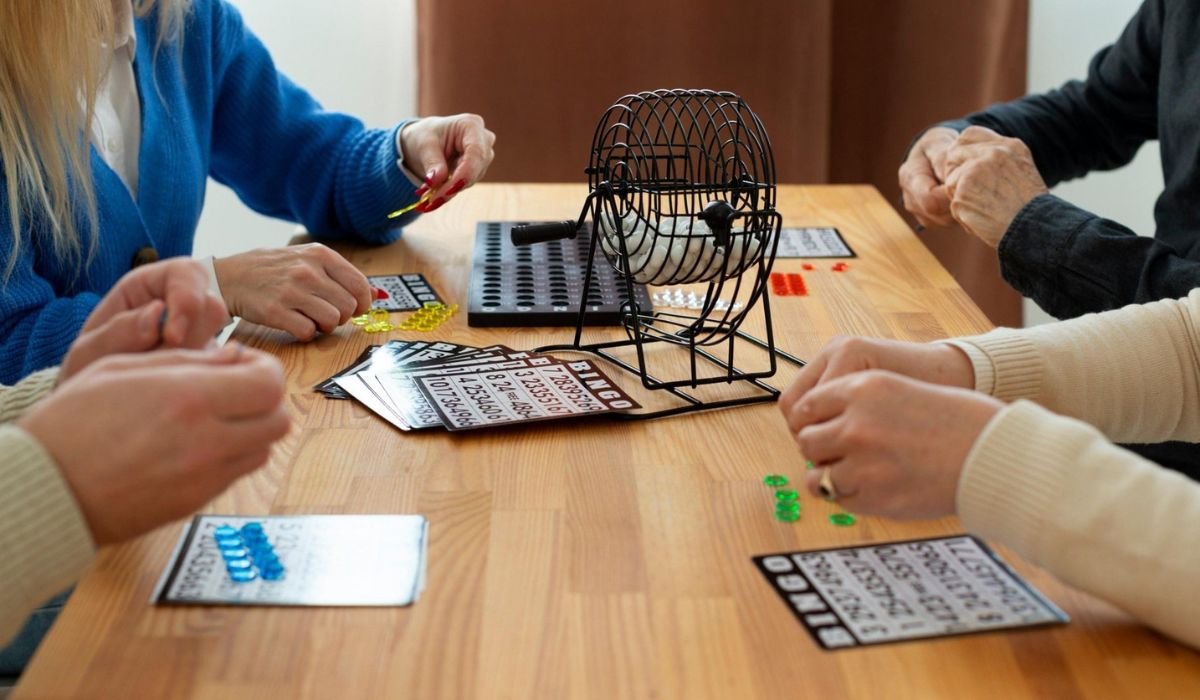Introduction
Goads on NYT crossword puzzles offer a unique challenge to even the most seasoned solvers. Whether you’re a veteran crossword enthusiast or a novice solver, understanding these tricky clues can significantly enhance your solving experience. In this comprehensive guide, we’ll delve into the intricacies of goads, providing you with strategies and insights to master them effectively.
Brief History of Crossword Puzzles
Crossword puzzles have captivated minds since their inception in the early 20th century. Originating in the United States in 1913, the first crossword puzzle appeared in the New York World newspaper, created by Arthur Wynne. This puzzle was a simple word game, but it quickly evolved into a complex and engaging mental exercise. The New York Times, which began publishing its crossword puzzles in 1942, further elevated the genre, introducing innovative formats and challenging clues that continue to engage solvers today.
Introduction to New York Times Crosswords
The New York Times (NYT) crossword puzzles are renowned for their difficulty and creative clueing. These puzzles have become a staple for enthusiasts who relish the challenge of deciphering clues that range from straightforward to incredibly complex. The NYT crossword is celebrated not only for its rigorous standards but also for its ability to incorporate contemporary themes and clever wordplay, making each puzzle a unique intellectual challenge.
Definition of a “Goad” in Crossword Terms
In the context of crossword puzzles, a goad refers to a clue that is particularly challenging or misleading, designed to test the solver’s ingenuity and perseverance. These clues often require solvers to think outside the box, utilizing a combination of wordplay, misdirection, and obscure references. The term “goad” aptly captures the nature of these clues, which push solvers to extend their thinking and problem-solving skills.
The Unique Challenge of Goads on NYT Puzzles
Goads in NYT crosswords are known for their ability to stump even experienced solvers. These clues often involve a high level of creativity and difficulty, incorporating various elements such as puns, double meanings, and complex wordplay. The challenge lies not only in understanding the clue but also in how it interacts with the surrounding answers and the overall puzzle theme.
Thesis
This article aims to provide a comprehensive guide to understanding and conquering goad clues in NYT crossword puzzles. We will explore common goad techniques, strategies for tackling these tricky clues, and analyze case studies to illustrate effective solving methods.
Understanding Goads
Common Goad Techniques
Misdirection: One of the hallmarks of a goad is its ability to mislead solvers. Misdirection involves presenting clues that seem straightforward but lead to an unexpected or less obvious answer. For instance, a clue might use a word with multiple meanings or a common phrase in an unusual context, prompting solvers to second-guess their initial thoughts.
Wordplay: Many goads rely on clever wordplay, including puns and anagrams. These clues often use double meanings or phonetic similarities to create a deceptive surface reading. For example, a clue might be phrased in a way that hints at one type of answer while actually leading to a completely different solution.
Obscure References: Goads frequently incorporate obscure references to literature, history, or pop culture. These clues might use less commonly known facts or require solvers to have a specific area of knowledge. Understanding these references can be crucial for solving the clue, making research or familiarity with the subject matter important.
Cryptic Constructions: Some goads employ complex grammatical structures or unconventional phrasing. These clues can be particularly challenging because they often require solvers to unravel intricate wordplay or syntax to arrive at the correct answer.
Examples of Goads from NYT Puzzles
To illustrate these techniques, consider the following examples from NYT puzzles:
- Example 1: “Prisoner’s predicament, perhaps (7).” The answer, “DILEMMA,” uses misdirection by presenting a general scenario that can be interpreted in various ways.
- Example 2: “Turn to another subject (4).” Here, the answer “SAY” involves wordplay with the term “turn” meaning to speak or “say” something.
- Example 3: “Noted work by Shakespeare’s rival (6).” The answer “MILTON” refers to John Milton, a poet who is less commonly known in the context of Shakespeare, requiring specific literary knowledge.
Analyzing the Psychology Behind Goad Clues
Understanding the psychology behind goad clues involves recognizing the cognitive strategies used in their creation. These clues often play on cognitive biases and problem-solving processes, pushing solvers to navigate through misleading information and think critically. The challenge lies in overcoming initial misinterpretations and applying logical reasoning to decipher the true intent behind the clue.
Strategies for Tackling Goads
Develop a Crossword Mindset
Cultivating a logical and creative approach is essential for solving goads. Embrace a mindset that is both analytical and imaginative, allowing you to approach clues from multiple angles and consider unconventional solutions.
Building a Strong Vocabulary
Expanding your vocabulary can significantly improve your ability to solve goads. Familiarity with a wide range of words and their meanings enables you to tackle diverse clues and recognize subtle wordplay.
Mastering Cryptic Clue Structures
Learning common patterns in cryptic clues is crucial. Familiarize yourself with standard formats, such as anagrams, homophones, and hidden words, to quickly identify and solve complex clues.
Utilizing Online Resources
Make use of crossword dictionaries and online solvers to aid in solving difficult clues. These tools can provide definitions, synonyms, and help identify potential answers based on partial information.
Practice Makes Perfect
Regular crossword solving is key to mastering goads. The more puzzles you complete, the better you will become at recognizing patterns and developing effective strategies for tackling challenging clues.
Goad Analysis: Case Studies
In-Depth Analysis of Specific Goad Clues
Case Study 1: “Fake or counterfeit (6).” The answer, “PHONEY,” employs wordplay where “fake” is a synonym for “phoney.” Analyzing how such clues use synonymous terms can help in solving similar goads.
Case Study 2: “Leader in a race, perhaps (7).” The answer, “SPECTER,” plays on the idea of a “leader” in the abstract sense of a ghost or “specter,” rather than a literal race leader.
Breaking Down the Clues and Revealing the Solutions
Breaking down these clues involves examining the wordplay, misdirection, and underlying meanings. For instance, recognizing that “phoney” is a synonym for “fake” and understanding that “specter” fits the abstract clue of a leader in a figurative race can provide insights into solving future goads.
Learning from the Process
Applying lessons from these analyses can enhance your problem-solving skills. Observing how different techniques are used in specific clues allows you to develop a more nuanced approach to tackling similar challenges.
Common Goad Mistakes and How to Avoid Them
Identifying Common Pitfalls for Solvers
Common mistakes include overthinking clues, misinterpreting wordplay, and overlooking simple solutions. Being aware of these pitfalls can help you avoid them and approach clues more effectively.
Offering Tips to Prevent Errors
To prevent errors, take time to carefully read and interpret each clue. Avoid jumping to conclusions and ensure you understand the full context before settling on an answer.
Overcoming Frustration
Maintaining a positive attitude is essential when faced with challenging goads. If you encounter frustration, take a break and return with a fresh perspective to improve your problem-solving efficiency.
Goads: A Love-Hate Relationship
Exploring the Addictive Nature of Goads
Goads can be both addictive and frustrating. The thrill of solving a challenging clue often outweighs the initial frustration, leading to a satisfying sense of accomplishment.
The Thrill of Solving a Challenging Clue
The satisfaction derived from cracking a difficult goad is a significant part of the crossword-solving experience. This sense of achievement keeps solvers engaged and motivated.
The Frustration of Being Stumped
While challenging clues can be exhilarating, being stumped by a goad can also be disheartening. Balancing the thrill of solving with the frustration of being stuck is part of the crossword puzzle experience.
Balancing Challenge with Enjoyment
Finding a balance between challenge and enjoyment is crucial. Embrace the complexity of goads while appreciating the satisfaction that comes from overcoming these challenges.
You May Also Like: Top Ways to Play Roblox Unblocked at School or Work
Conclusion
In summary, goads on NYT crossword puzzles present a unique and engaging challenge. By understanding common goad techniques, developing effective solving strategies, and analyzing specific clues, solvers can enhance their skills and enjoyment. Embrace the challenge of goads as part of the enriching experience of crossword solving.
For further learning and practice, continue to engage with crossword puzzles and explore additional resources. The enduring appeal of goads lies in their ability to push the boundaries of our problem-solving abilities and provide a rewarding intellectual pursuit.
FAQs
What are goads in NYT crossword puzzles?
Goads in NYT crossword puzzles are challenging clues designed to test solvers’ creativity and problem-solving skills. They often involve misdirection and clever wordplay.
How can I improve my ability to solve goads on NYT puzzles?
To improve, develop a crossword mindset, expand your vocabulary, practice regularly, and utilize online resources like crossword dictionaries and solvers.
What techniques are commonly used in goad clues?
Common techniques include misdirection, wordplay (such as puns), obscure references, and cryptic constructions with complex grammatical structures.
Can you give an example of a goad from a NYT puzzle?
An example is the clue “Fake or counterfeit (6),” where the answer is “PHONEY.” This clue uses wordplay to refer to something fake.
Why are goads considered both challenging and addictive?
Goads are challenging due to their complexity, but solving them provides a sense of accomplishment, making the experience addictive and rewarding.











